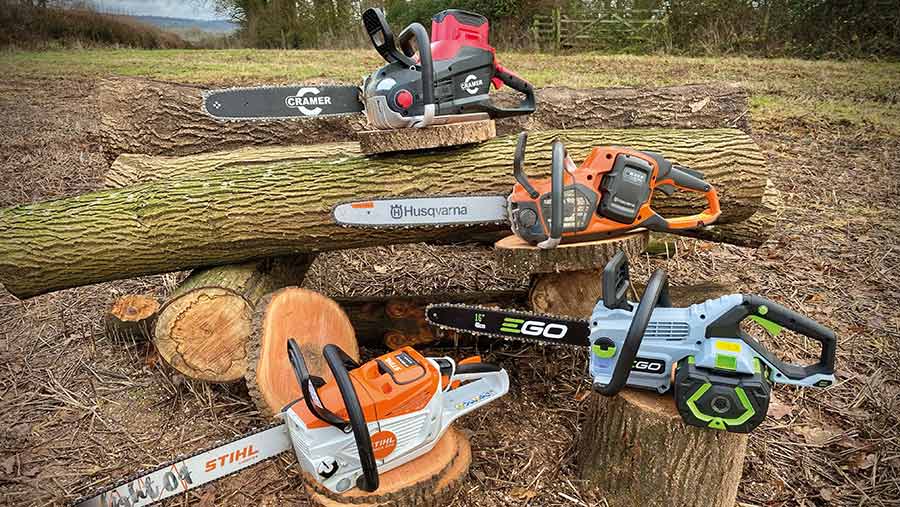When it comes to chainsaws, the chain itself is an essential component that can significantly influence the tool’s performance, efficiency, and safety. Whether you’re a professional lumberjack or a homeowner tackling weekend projects, selecting the best chainsaw chain can make a substantial difference. In this guide, we will explore everything you need to know about choosing the right chainsaw chain for your specific needs, ensuring that you get the most out of your investment.
What Makes a Chainsaw Chain the Best?
Before diving into specific recommendations, it’s crucial to understand what characteristics define the best chainsaw chain. Factors like cutting efficiency, durability, and safety are key considerations. The chain’s type, pitch, gauge, and the quality of the material also play vital roles.
1. Cutting Efficiency
The best chainsaw chain should offer a smooth and efficient cutting experience. Look for a chain with sharp, well-designed teeth that can handle various wood types without frequent dulling. Low-kickback designs are preferable for safety and ease of use.
2. Durability
Durability is another critical factor. A high-quality chainsaw chain should be made from robust materials that withstand heavy use. Chromium or carbide-tipped chains offer enhanced longevity, making them ideal for cutting hardwood or frozen wood.
3. Safety
Safety features like low kickback and anti-vibration are essential, especially for beginners or occasional users. These features reduce the risk of accidents and fatigue, making your cutting experience safer and more comfortable.
Types of Chainsaw Chains
Choosing the best chainsaw chain also involves understanding the different types available on the market. Here’s a quick rundown of the most common types:
1. Full Chisel Chains
These chains have square-cornered teeth that offer the fastest cutting speed. They are ideal for cutting hardwood but require frequent sharpening and are less forgiving on rough or dirty wood.
2. Semi-Chisel Chains
With rounded corners, semi-chisel chains are more resistant to dulling and perform well in rough conditions. They are slower than full chisel chains but offer better durability and are easier to maintain.
3. Low Profile Chains
Designed for smaller chainsaws, low profile chains are typically used by casual users. They offer reduced kickback and increased safety, making them ideal for light cutting tasks.
4. Ripping Chains
Specially designed for cutting along the grain, ripping chains are used in milling and other specialized applications. They are not suitable for general-purpose cutting but are the best choice for precision woodworking tasks.
Key Factors to Consider When Choosing the Best Chainsaw Chain
Choosing the best chainsaw chain requires considering several key factors. Here are some essential aspects to keep in mind:
1. Chain Pitch
The pitch is the distance between three consecutive rivets divided by two. Common pitches are 1/4”, .325”, 3/8”, and .404”. Smaller pitches like 1/4” and .325” are suited for light-duty chainsaws, while larger pitches like 3/8” and .404” are used for more powerful chainsaws.
2. Chain Gauge
The gauge refers to the thickness of the drive links that fit into the chainsaw bar. The most common gauges are .050”, .058”, and .063”. Using the correct gauge ensures a secure fit and optimal performance.
3. Number of Drive Links
The number of drive links determines the chain’s length and compatibility with the chainsaw bar. It’s crucial to match the number of drive links with the manufacturer’s specifications for your chainsaw.
4. Material Quality
Chainsaw chains are typically made from steel, but higher-end models feature carbide or chrome-plated teeth. These materials offer superior cutting performance and longevity but come at a higher price.
Top Picks for the Best Chainsaw Chain
With a clear understanding of what to look for, let’s explore some of the best chainsaw chains available on the market today:
1. Oregon S56 AdvanceCut Chainsaw Chain
Known for its high-quality build and sharpness, the Oregon S56 is a semi-chisel chain that offers excellent cutting performance and durability. It features low kickback and vibration, making it a popular choice for both professionals and homeowners.
2. Husqvarna H30-72 Pixel Chainsaw Chain
The Husqvarna H30-72 is a low-profile chain designed for smooth and efficient cutting. It’s ideal for smaller chainsaws and offers reduced kickback, making it a great choice for beginners.
3. Stihl 26RS Rapid Super Chainsaw Chain
For those who need a high-performance chain for tough jobs, the Stihl 26RS is a full chisel chain that excels in cutting speed. It’s best suited for experienced users who can handle its aggressive cutting capabilities.
4. EGO Power+ AC1600 Chain
A versatile option compatible with various chainsaw brands, the EGO Power+ AC1600 is known for its durability and efficiency. It features a semi-chisel design that provides a good balance between speed and longevity.
Maintenance Tips for Your Chainsaw Chain
Maintaining your chainsaw chain is crucial for safety and performance. Here are some tips to keep your chain in top condition:
1. Regular Sharpening
A dull chain can lead to inefficient cutting and increased wear. Use a round file to sharpen the chain’s teeth, following the manufacturer’s recommended angles and depth.
2. Proper Lubrication
Always keep the chain well-lubricated to reduce friction and prevent overheating. Most chainsaws have automatic oilers, but it’s important to check the oil levels regularly.
3. Tension Adjustment
A loose chain can derail during operation, while an overly tight chain can cause excessive wear. Adjust the tension as needed, ensuring that the chain fits snugly against the bar but can still be pulled by hand.
4. Cleaning and Storage
After use, clean the chain and bar to remove sawdust and debris. Store the chainsaw in a dry place to prevent rust and corrosion.
How to Maximize the Lifespan of Your Chainsaw Chain
Extending the life of your chainsaw chain not only saves money but also ensures consistent performance. Here’s how you can get the most out of your chain:
- Avoid Contact with Dirt and Rocks: Hitting dirt, rocks, or other foreign objects can quickly dull the chain. Clear the cutting area of debris before starting your work.
- Use the Right Chain for the Job: Using a ripping chain for general cutting or a full chisel chain on dirty wood can lead to faster wear. Always choose the right chain for your specific task.
- Monitor the Bar and Sprocket: A worn-out bar or sprocket can cause uneven wear on the chain. Replace these components as needed to maintain proper chain alignment and performance.
- Invest in Quality Chains: While high-quality chains may be more expensive upfront, they offer better performance and longevity, reducing the need for frequent replacements.
Conclusion
Selecting the best chainsaw chain requires careful consideration of the type, pitch, gauge, and material quality. By understanding these factors and choosing a chain that fits your specific needs, you can enhance your chainsaw’s performance and safety. Whether you’re a professional or a weekend warrior, investing in the right chainsaw chain will pay off in the long run. Keep your chain well-maintained, and it will serve you well for many cutting projects to come.



